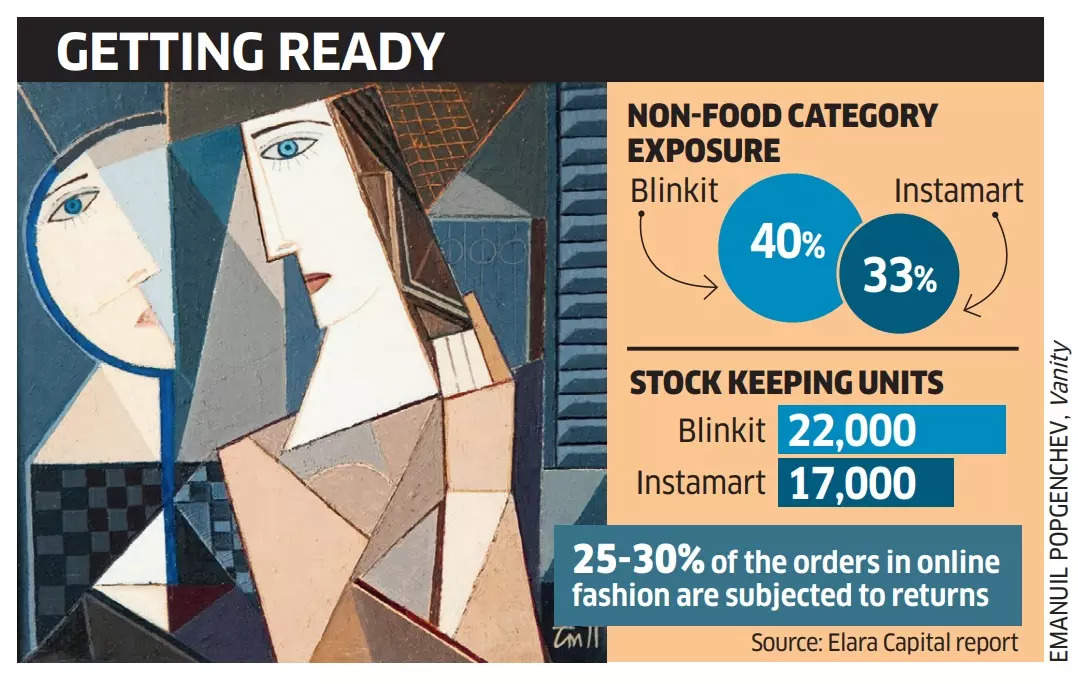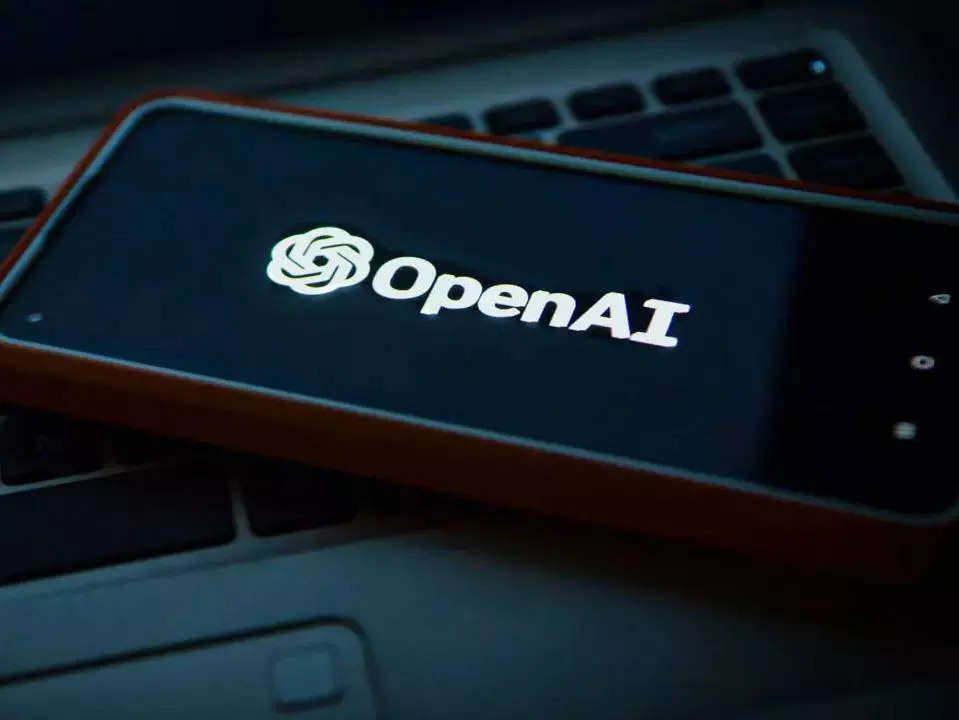


Also in the letter:
■ Tally’s finserv play
■ OpenAI’s o1 leap
■ Byju’s US lenders on term loan
Qcomm data may turn key input for new GDP maths
The government may soon study purchases made on quick commerce platforms, which are on the rise across the country, to understand changes in consumption patterns and the pace of economic activity.
Driving the news: The government aims to observe this as part of an exercise to revise the base year for national accounts and various other official statistics, officials told ET.

Quick commerce as a sector has been growing over the past year, with major players Zepto, Zomato’s Blinkit, and Swiggy Instamart attracting great interest from investors. Estimates suggest that purchases made through them have come to account for 5-6% of overall household grocery spending in the country.
Tell me more: Quick commerce has taken off, especially after the Covid-19 pandemic, with most fast-moving consumer goods (FMCG) companies reporting it as their fastest-growing sales channel. Moreover, the companies are moving out of their staple groceries and essential products to deliver a wider range of consumer goods. This makes them a good data sample for consumption pattern changes, demand situations, and pricing.
Context: The base year for most macroeconomic data is 2011-12 at present, and the Ministry of Statistics and Programme Implementation is likely to pitch for 2022-23 or 2023-24 as the next base year to the Advisory Committee on National Accounts Statistics, which is overseeing the revision of the base year for national accounts.
The Survey on Household Consumption Expenditure 2022-23 will be used to update the consumption basket and base revision of the Consumer Price Index.
Read our in-depth reporting on the rise of quick commerce:
Quick commerce is solving ‘returns’ question to ace fashion ecommerce

Quick commerce is spreading its wings to include consumer electronics, lifestyle, and fashion in its scope. The main players in the space are looking to address one of the biggest pain points of online fashion shopping—returns and exchanges.
What’s the news:

Around a quarter of online fashion orders are returned as users look to replace products for want of correct sizes and fittings.
Q-comm’s plans: ET has been reporting about the rise of quick commerce and its limited foray into fashion products by selling basic apparel such as undergarments, t-shirts, socks, and kurtas in addition to footwear products such as flip-flops and sandals.

Zomato-owned Blinkit, Swiggy Instamart, and Zepto—all of which entered the fashion category earlier this year—sell products of brands such as Adidas, Pepe, FabIndia, Jockey, Boldfit, XYXX, Paragon, Liberty, and others.
Also Read | ETtech In-depth: Quick commerce is diversifying fast. It won’t be easy
Tally is at work on new accounting platform for small businesses

Tejas Goenka, MD, Tally Solutions
Software solutions provider for small businesses Tally Solutions is planning a larger financial services play, intending to get into financial reconciliation, credit offerings, and an integrated tax filing service.
Driving the news: Armed with the NBFC-Account Aggregator licence, Tally is looking to facilitate easy flow of financial information between banks and data users. It is also looking to integrate with large banks to allow its users to reconcile their payments and transactions onto the Tally platform directly, without the need for manual intervention.
Understanding Tally: Founded back in 1986, the Bengaluru-headquartered company is on a mission to rediscover itself and redefine its services for the new generation of small businesses. As they get digitised, Tally is trying to become enterprise-grade software that can take care of all financial and reconciliation needs of MSMEs.
Expanding the paid user base: Tally, which had around half a million paid users before GST was introduced, now has 2.5 million paid users. The company has set a target of growing this number by 50% over the next three years.
Also Read | Tally is thinking of accounting tech via images using AI/ML
OpenAI’s o1 takes a leap with model that reasons like us

OpenAI’s o1, dubbed as the strawberry project capable of “thinking” and “reasoning,” was recently launched. It is six times costlier than the GPT 4o Mini. But what is its best use? Experts weighed in.
What’s happening: Experts and executives said it is better suited for complex applications like software programming, STEM, legal, disease diagnosis, scientific research, etc.
While announcing the model this week, OpenAI claimed that in a qualifying exam for the International Mathematics Olympiad, GPT-4o correctly solved only 13% of problems, while the reasoning model o1 scored 83%.
Verbatim: “OpenAI is betting on the fact that enterprises will increasingly use AI for reasoning in domains such as quantitative computations and software engineering,” said Arun Chandrasekaran, Distinguished VP Analyst, Gartner.
Mayank Kumar, cofounder and managing director of upGrad, said the model demonstrates greater precision and reduces instances of hallucination with advanced reasoning capabilities.
Pawan Prabhat, cofounder of Shorthills AI, said an LLM is no longer a tool to just predict the next word or the sentence, “but it really grasps the meaning of the question.”
Also Read | OpenAI’s $150 billion valuation hinges upending corporate structure
Other Top Stories By Our Reporters

Byju’s obligated to repay $1.2 billion with interest, says US lenders: The US lenders of Byju’s parent company Think & Learn have said that the troubled edtech firm must repay the borrowed $1.2 billion along with interest. According to these lenders, Byju’s has not made any contractually due payment in more than 17 months.
Servicing the product economy: Indian IT firms eye AI to bridge market cap gap with global leaders | Despite the strong performance of Indian IT stocks compared to major US tech firms, none of the Indian IT companies rank among the top 10 or even the top 50 global tech companies by market cap. Interestingly, nearly all companies in the global top 100 have significant back-end operations in India, with some even maintaining their largest centres outside their home countries in India.
Apple Watch Series 10: a powerhouse that goes beyond monitoring | It has been eight years since the Apple Watch Series 1 debuted. That iteration had focused on basic health tracking and notifications, but it set the stage for the way we approach wearables today. And now, Apple has launched its most advanced watch yet—the Apple Watch Series 10. Here’s what else is part of this watch wonder.
Global Picks We Are Reading
■ Inside Google’s 7-year mission to give AI a robot body (Wired)
■ OpenAI acknowledges new models increase risk of misuse to create bioweapons (FT)
■ Mexican shoppers say Shein and Temu’s delivery partner is stealing their stuff (Rest of World)